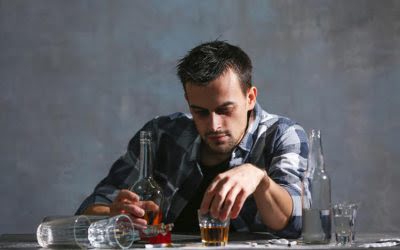In the next section, we will explore strategies and approaches for treating alcohol addiction by modulating dopamine and the reward system. The mesocorticolimbic dopamine system (or the so‐called brain reward system, Figure 1) is one of the established neurobiological systems involved during the development and maintenance of alcohol dependence and thus one potential treatment target. Here, we aim to review the animal and human data describing the role of dopamine and the mesolimbic dopamine system during acute and chronic alcohol exposure. Finally, preclinical and clinical studies evaluating the potential of available dopaminergic agents as well as indirect dopamine modulators as novel medications for alcohol dependence are discussed.
MeSH terms
Considering these data together, it is also tempting to speculate on a different role for acetaldehyde which is naturally contained in wine and other alcoholic beverages (Osborne et al., 2000; Peinado et al., 2004) as more than merely a volatile flavor compound (Genovese et al., 2005). In fact, acetaldehyde ingested together with alcoholic drinks may actually reach the central nervous system more efficiently, actively participating in the rewarding and motivational effects of ethanol. SSRI’s also are useful in treating anxiety, depression, and other mood disorders that result at least in part from dysfunctional serotonergic signal transmission in the brain (Baldessarini 1996). Accordingly, drugs that target serotonergic signal transmission may reduce alcohol consumption partly by improving the co-occurring psychiatric problems and thus eliminating the need for self-medication with alcohol. To some extent, however, the effects of SSRI’s on alcohol consumption appear to be unrelated to the medications’ antidepressant or anxiolytic effects (Naranjo and Kadlec 1991).
The Role of Dopamine in Creating Positive Feelings After Drinking
I personally get sunlight every single day during the spring and summer months to increase dopamine. But dopamine actually appears to increase desire and motivation more than pleasure. Both GABA supplements and alcohol Oxford House have a sedating effect, and taking them together may cause CNS depression. CNS depression can lead to the inhibition of critical bodily functions, including heart rate, breathing, and consciousness.
Alcohol promotes dopamine release in the human nucleus accumbens
Cellular mechanisms that mediate alterations in mPFC synchrony and cognitive disruption following chronic ethanol exposure. Under control conditions (left panel), synchronous activation of appropriate cortical networks mediates cognitive control over behavior. Following chronic alcohol exposure (right panel), network synchrony is disrupted due to does alcohol increase dopamine the reduction in D2/D4 receptor modulation of excitability of pyramidal neurons and FSINs.

In contrast, lower, ambient levels of DA target D2 receptors that decrease excitatory and inhibitory influences so that multiple items in the environment can be attended to at once. Because of this, networks under the influence of this D2-dominated state can flexibly respond to changes in environmental cues to execute updated strategies aimed at obtaining reinforcers (Durstewitz, Seamans, & Sejnowski, 2000). When alcohol is consumed, it enters the bloodstream and eventually reaches the brain. In the brain, alcohol affects the release of dopamine in the reward centers, such as the nucleus accumbens. Alcohol increases the release of dopamine, leading to a surge of pleasurable sensations and euphoria.
As the ethanol-induced excitation can be seen in acutely dissociated neurons, it suggests a site of action either on the cell surface or mediated by intracellular constituents, such as second messengers. Studies of the effects of ethanol on ion channels have demonstrated that ethanol can have direct actions on ion channels such as BK (Chu et al., 1998). Investigations of ion channel blockers on the effects of alcohol in the VTA revealed that ethanol-induced excitation could be blocked with quinidine, at concentrations which block primarily potassium channels (Appel et al., 2003).

This depletion can have far-reaching consequences for our mood, motivation, and overall well-being. This system is designed to reinforce behaviors that are essential for survival, like eating and socializing. When alcohol triggers a dopamine release, the brain interprets this as a rewarding experience, making us want to repeat the behavior. A number of studies have also shown that it significantly increases the release of dopamine and increases dopamine https://www.bricoself.ro/recovery-sobriety-symbols-tattoos/ levels in the brain ( ).
- In rats, oral alcohol uptake also stimulates dopamine release in the NAc (Weiss et al. 1995).
- Indeed, acetaldehyde induces conditioned stimulus preference (Quertemont and De Witte, 2001) and place preference (Peana et al., 2008).
- The economic costs of excessive alcohol consumption in 2006 were estimated at $223.5 billion.
Regardless of the complexity of the neurotransmitter systems of the VTA, it is clear that DA plays a critical role in the rewarding effect of drugs of abuse, and that changes in this system may underlie many aspects of addiction (for review see Lapish, Seamans, & Chandler, 2006). Understanding the relationship between alcohol, dopamine, and addiction provides valuable insights into the neurobiological mechanisms underlying alcohol addiction. Alcohol’s impact on dopamine release, receptor activity, and reward pathways contributes to the reinforcing effects of alcohol and the development of addictive behaviors. By targeting the dopamine system, interventions and treatments for alcohol addiction can help individuals break free from the cycle of addiction and achieve recovery.
Healthy Alternatives to Alcohol for Motivation
In 2006, there were more than 1.2 million emergency room visits and 2.7 million physician office visits due to excessive drinking. The economic costs of excessive alcohol consumption in 2006 were estimated at $223.5 billion. A study released on August 2, 2013 found that those who are energized by alcohol have a hyperactive dopamine response to alcohol and are genetically predisposed to drink more heavily. As we continue a pattern of habitual drinking, the brain gets used to the new normal of getting its dopamine externally — and having too much of it. Eventually, as the brain tries to balance itself, the same amount of alcohol no longer results in the same level of dopamine release in the brain.
In some societies, alcohol consumption is even accepted as part of normal social etiquettes. Alcohol is thus, all pervasive and is in this way is the most dangerous drug known to mankind. Generally, alcohol exposure for more than 1 day is considered chronic, because this time period exceeds the usual duration of a single session of drinking and intoxication.
